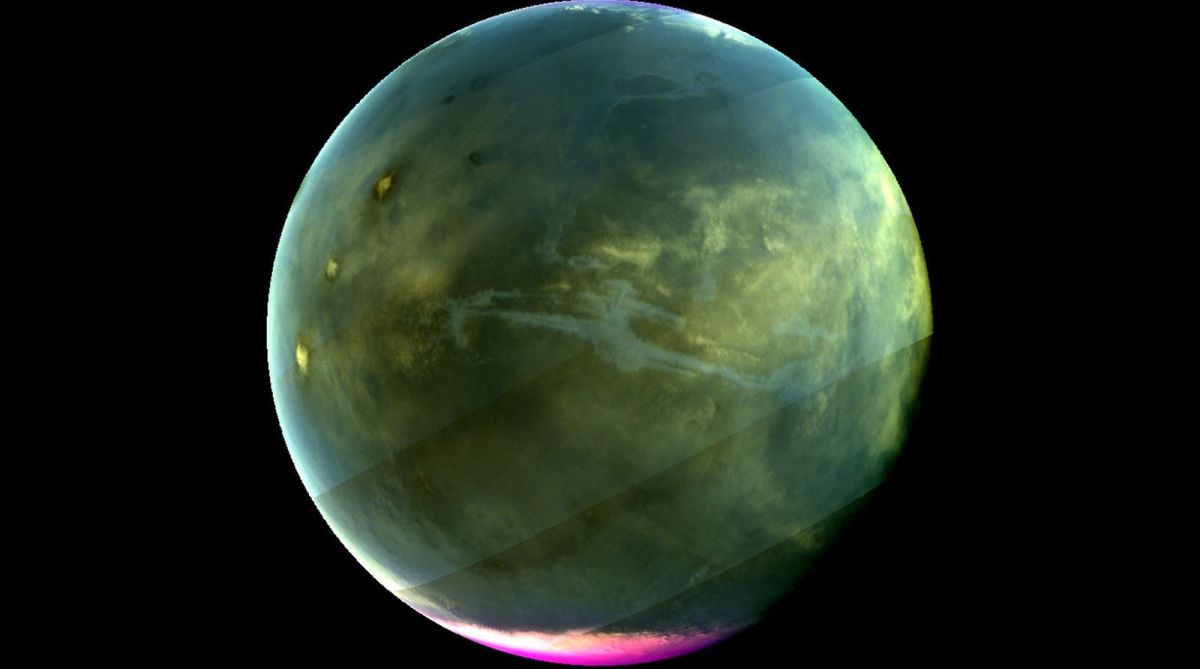Isro Mars Orbiter Chief ambitious about Mission Venus
The first ever venture into Venus is part of the country's space exploration, claimed the topmost ISRO scientists here on Wednesday.
Mars, the fourth planet from the Sun, will be 57.6 million kilometres from Earth on Tuesday, the closest it has been since 2003

A Sharpened Ultraviolet View of Mars. (Photo: NASA/Goddard/University of Colorado /LASP)
Don’t forget to look up and catch a glimple of a brighter Mars tonight as the Red Planet makes its closest approach to Earth in 15 years on Tuesday. This will be third and the last celestial treats — solar eclipse, lunar eclipse and brighter Mars — that were lined up in July.
Mars, the fourth planet from the Sun, will be 57.6 million kilometres from Earth on Tuesday, the closest it has been since 2003 when it came within 55.7 million kilometres, which was the nearest in almost 60,000 years.
Advertisement
“The Red Planet will be at its brightest since 2003, when Mars made its closest approach to Earth in almost 60,000 years since September, 24, 57617 BC,” Dr Debiprosad Duari, director, Research & Academic, MP Birla Institute of Fundamental Research had said earlier this month.
Advertisement
Mars will be visible in the night sky after sunset till sunrise from everywhere in India, provided the monsoon clouds don’t play spoilsport.
On July 27, Mars was at opposition, meaning that the Sun and the Red Planet came opposite to each other, keeping the Earth in the middle.
NASA’s Mars rover Curiosity posted a tweet Tuesday morning, saying Mars won’t be this near again before 2035.
“I feel so close to you right now. #Mars and Earth haven’t been this near since 2003, and won’t be again until 2035! Look to the south tonight to see the Red Planet shining bright,” it said.
I feel so close to you right now. #Mars and Earth haven’t been this near since 2003, and won’t be again until 2035! Look to the south tonight to see the Red Planet shining bright. https://t.co/2R4uKiIPsQ pic.twitter.com/d6N3C0y8Rx
— Curiosity Rover (@MarsCuriosity) July 30, 2018
Mars comes at opposition at an average interval of two years and two months when the planet comes close to the Earth and becomes brighter, the Ministry of Earth Science said in a statement.
Mars opposition that had occurred in August 2003 brought the two planets closest distance in approximately 60,000 years.
The closest approach on Tuesday will make Mars brightest since 2003.
During opposition, Mars is especially photogenic because it can be seen fully illuminated by the Sun as viewed from Earth.
By mid-August, Mars will become fainter as Mars and Earth travel farther away from each other in their orbits around the Sun, according to NASA.
The next Mars close approach will be on 6 October 2020.
(With inputs from agencies)
Advertisement